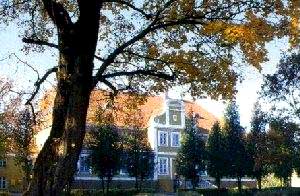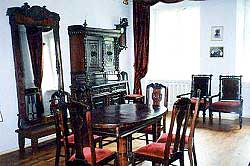
Museum's
collection
The permanent
exhibition features the local history and the mode of
life of Kelme area, and the landlord
Gruzewskis’ family.
Expositions
In the Family Exposition of the Owners of the Estate
Gruzewskis
furniture, plates
and dishes, photographs, graphic works, information
material about the former owners of the estate are
displayed.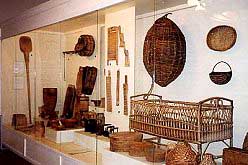
In the
Family Life and Folk Art
Exposition things
and furniture used in household in the 18th and 19th
century.
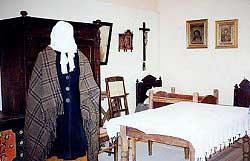 Cultural,
educational activity
Cultural,
educational activity
The museum
together with Education Division of the Municipality of
Kelme region implements educational program
“Let’s be acquainted with our native
land”. More than 160 primary school pupils take part
in it.
Scientific conferences, seminars.
The museum is located in the property of the
Gruzewskis family. The estate reflects the main features
of the development of Lithuanian estate architecture,
construction, and park planning.
Kelme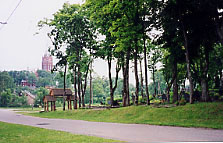
Kelme, town in the west central Lithuania (1420 to 1939
Poland), 43 km southwest from Siauliai, on the left bank
of the Krazante river. 175 km north of Poland, 200 south
west of Latvia and about 110 km east of Kaliningrad
Region (fmr Poland, currently occupied by Russia). The
population in 1959, 6,830 (2,890 in 1923, 3,705 in 1940,
of which 2,000 were Jews). A great part of the town was
destroyed during World War II. After the war, 700 private
and public buildings were erected.
The town has a hospital, several secondary schools, music
and commerce schools, ethnographic museum, and stadium.
On the outskirts of town is a small park and the old
estate's hall originally built on the 16th-18th centuries
with a gate of baroque style, which was later renovated
in the classical style and achieved distinctive
architectural merit.
The 1294 chronicles of the Teutonic Order cite a castle
named Kymel. In the 15th century this location was a
large royal domain.
The first wooden church was built in 1416. It was taken
over by Calvinists in 1596. At that time, the
Gruzewski family acquired Kelme estate; the estate
numbered over 25 villages. In 1610 the Gruzewski
issued a decree for inhabitants. When the Roman Catholics
regained their church after prolonged court proceedings,
in 1615 the Gruzewski family built a new Calvinist
church. Kelme grew more rapidly after a highway from
Latvia (Riga) to Prussia was built across town during
1836-58. The town was renowned for its great markets and
especially its horse fairs. Kelme had several
industrial plants and cultural institutions, including
Jewish high school.
BACK
TO REFERENCE PAGE
